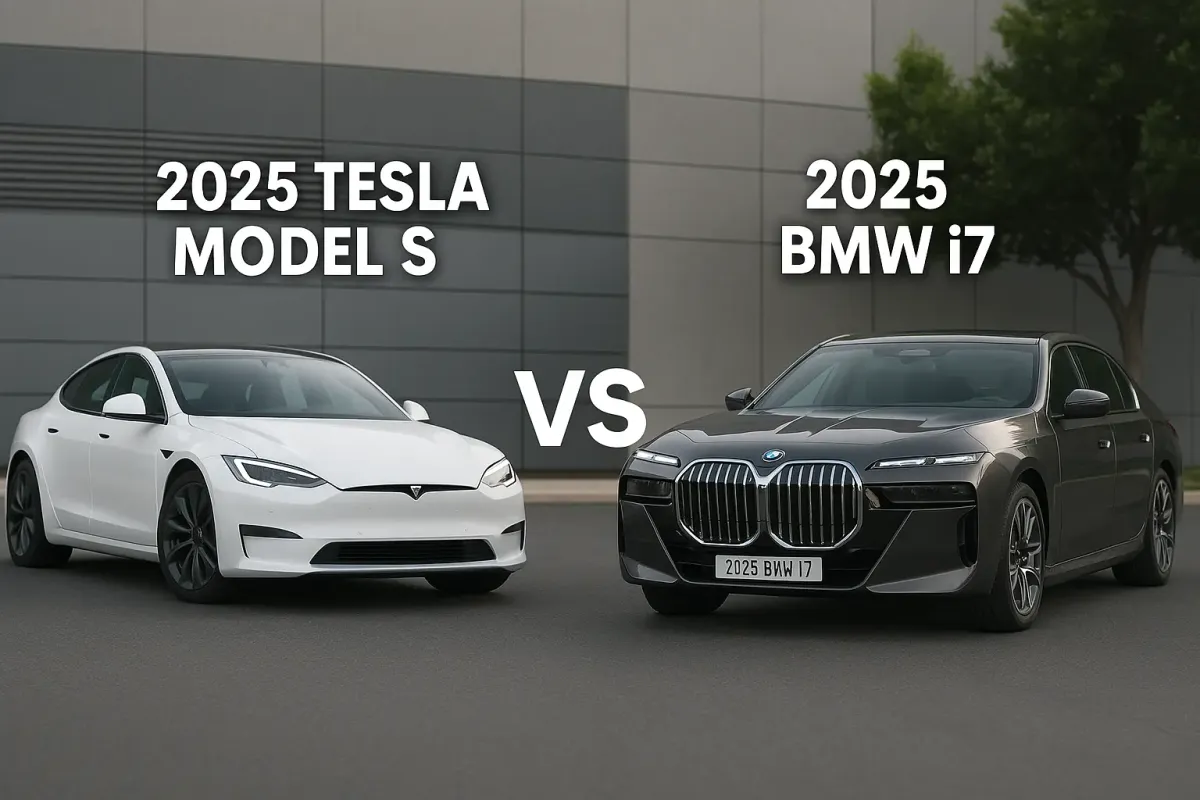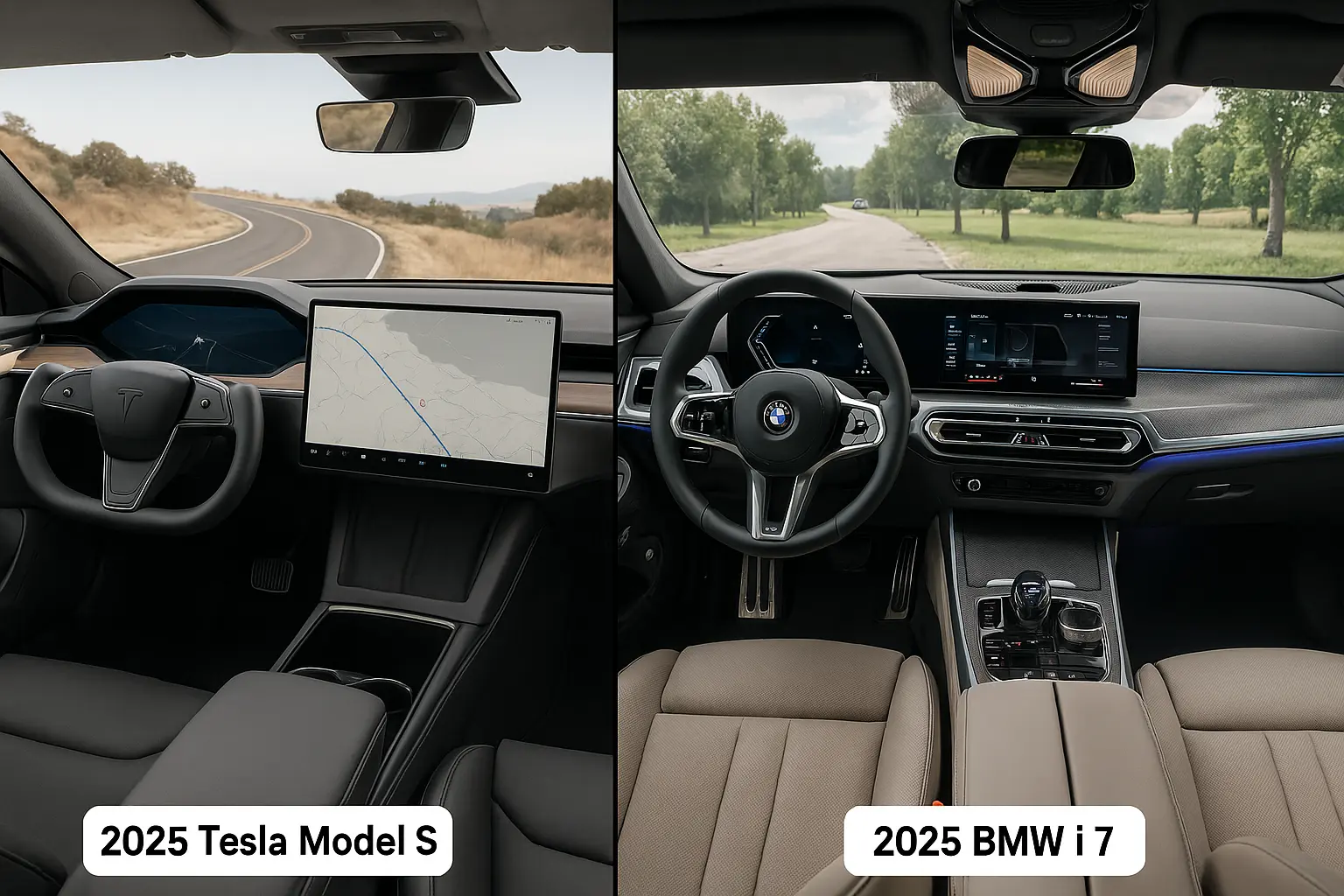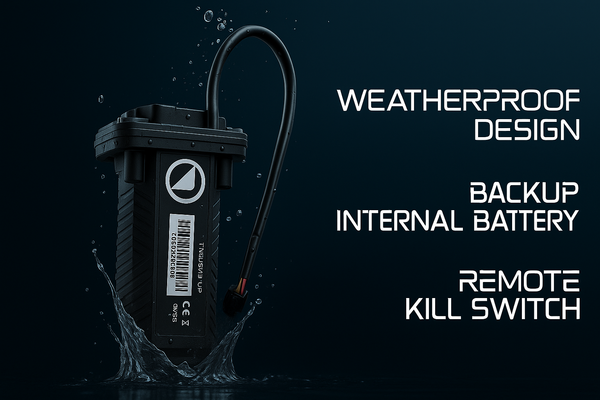2025 Tesla Model S vs 2025 BMW i7
A detailed face‑off between the 2025 Tesla Model S and the 2025 BMW i7 shows how each electric flagship tackles design, range, charging, tech and long‑term costs, giving readers the clarity needed to choose their next luxury EV.

Speed Meets Sophistication: Which Flagship EV Deserves Your Driveway
Introduction
Luxury electric sedans have reached a point where software ecosystems matter as much as leather grain and suspension tuning. On one side stands the Tesla Model S, the pioneer that keeps refining range and over‑the‑air wizardry. On the other is the BMW i7, a newcomer that fuses Bavarian dynamics with cinema‑class rear‑seat indulgence.
This guide blends official data from the manufacturer pages for Model S with hands‑on impressions from the TurboTorque TV review supplied by the user. The aim is to strip away marketing gloss and offer a human take on daily usability, ownership costs and driving character. By the end you will know which sedan aligns with your commute, weekend escapes and definition of prestige.
Why This Comparison Matters in 2025
Electric vehicle adoption keeps climbing and incentives continue to evolve. Flagship sedans set technology standards that soon filter down to compact crossovers. Tesla still leads the EPA range leaderboard at more than four hundred miles per charge, while BMW brings fresh competition with theatre style rear screens and a driving assistant that allows hands‑free cruising on approved highways. Understanding the strengths of each brand today helps buyers secure the best financing, predict depreciation and select the right charging ecosystem for the long haul.
In‑Depth Design Breakdown
Exterior presence
Model S keeps its clean lines and industry leading drag coefficient of 0.208 Cd. New paint choices such as Ultra Red and Stealth Grey pair with nineteen or twenty one inch aero wheels that reduce turbulence at highway speed.
BMW i7 makes no attempt at subtlety. An illuminated kidney grille, split level LED headlamps and optional two tone bodywork broadcast status from blocks away. Aerodynamic sculpting around the side skirts and rear diffuser channels air for both efficiency and stability.
Lighting details
Tesla uses adaptive matrix LEDs that shape the beam pattern to minimise glare. BMW adds available laser light technology that can project further down unlit roads while consuming less energy.

Inside the Cabins
Materials and ambience
Model S adopts minimalism with a seventeen inch landscape screen and an uncluttered dash wrapped in synthetic leather and open pore wood. A panoramic glass roof expands the sense of space and acoustic glass reduces wind noise.
BMW counters with opulence. A curved display merges a twelve point three inch driver cluster with a fourteen point nine inch infotainment touchscreen running iDrive 8.5. Rear passengers enjoy a thirty one inch theatre screen that folds from the headliner and pairs with Bowers and Wilkins Diamond audio. Crystal like controls and carbon fibre trim complete the high tech lounge vibe.
Ergonomics
Tesla routes nearly every function through the main screen yet retains a small display behind the steering yoke or optional round wheel. BMW splits duties among the touch screen, a haptic glass dial and natural language voice commands, reducing menu diving when the car is in motion.
Performance Beyond Acceleration
Tesla Model S Dual Motor
Power 670 hp
Torque instantly available at all speeds
Zero to sixty 3.1 seconds
Adaptive air suspension smooths bumps while maintaining flat cornering.
BMW i7 M70
Power 650 hp and 811 lb‑ft
Zero to sixty 3.5 seconds
Rear wheel steering shrinks turning circle and active air suspension balances comfort with agility.
On a twisty back road the lighter Tesla feels more playful while the BMW leans into grand touring comfort, masking speed with a calm cabin. Both sedans handle daily commuting with ease yet each delivers its personality when the road opens up.
Specs & Real‑World Use
| Specification | Tesla Model S Dual Motor | BMW i7 M70 |
|---|---|---|
| 0‑60 mph | 3.1 s | 3.5 s |
| Peak power | 670 hp | 650 hp |
| Battery | about 100 kWh | 101.7 kWh |
| Range | 402 miles EPA | 268–285 miles estimate |
| Fast charge | 250 kW up to 200 miles in 15 min | 195 kW about 80 miles in 10 min |
| Cargo | 28 cu ft plus front trunk | 17.7 cu ft trunk |
| Starting price | 79 990 USD | 168 500 USD |
EPA and WLTP testing differ so real motorway range usually lands ten to fifteen percent below the label. Even so both cars can cover Los Angeles to Las Vegas with a single coffee stop.
Software, Updates, and Infotainment
Tesla pioneered monthly over the air packages that add everything from new arcade games to updated suspension calibrations. A mobile app lets owners precondition the cabin, schedule charging and view live camera feeds.
BMW answers with iDrive 8.5, augmented reality navigation and an AI powered voice assistant that understands natural conversation. Quarterly updates arrive wirelessly and can unlock new driver assistance functions and infotainment features without a dealer visit.
Safety & Driver Assistance
Model S relies on a camera only vision suite that handles adaptive cruise, lane keeping and automatic lane change. Continuous software learning improves object detection and braking responses over time.
BMW fits Driving Assistance Professional which combines radar and cameras for hands free cruising on selected highways up to sixty miles per hour. A 360 degree camera with augmented overlays makes tight parking manoeuvres stress free. Carbon core chassis sections add rigidity without excess weight.
Charging: Availability and Convenience
Network reach
Tesla owners tap more than sixty thousand Supercharger stalls worldwide. The navigation planner automatically preconditions the battery to reach peak charge speed, shaving minutes off every stop.
BMW partners with Electrify America and other CCS networks giving access to over one hundred twenty thousand public plugs in North America. Three years of complimentary thirty minute DC sessions sweeten the ownership proposition.
Home solutions
Both sedans accept eleven kilowatt AC charging for overnight replenishment. BMW offers a wall box that integrates with home energy management to schedule sessions during off peak rates.
Comfort, Cabin Noise & Everyday Usability
Double pane glass and active noise cancellation help the Tesla cabin stay serene at freeway speeds. Seats now feature deeper bolsters and a wider range of adjustments making long stints less fatiguing.
BMW raises the luxury bar with massaging executive lounge rear seats that recline almost flat. A thirty one inch screen and five G connectivity transform the back row into a rolling cinema. Adaptive air suspension glides over expansion joints yet firms up in sport mode to keep body motions tidy.
Resale Value, Insurance, and Long‑Term Costs
Tesla enjoys robust resale thanks to strong demand and a proprietary charging ecosystem. Insurance premiums trend higher than average but minimal maintenance partly offsets the extra cost.
BMW enters the electric space with a high initial price yet includes four years of unlimited mileage maintenance. Limited supply and bespoke options could bolster residuals among collectors who value exclusivity.
Conclusion
Select the Tesla Model S if cross country range, rapid software evolution and a dense fast charge network rank at the top of your wish list. Choose the BMW i7 if cinematic rear entertainment, handcrafted ambience and a dynamic yet comfort focused ride better match your lifestyle. Either way both sedans prove that zero emission travel now sits comfortably at the peak of automotive luxury. Share this guide with friends, add your thoughts below and schedule a test drive to experience the future of motoring today.
FAQ – Popular Google Questions
How far can the Tesla Model S travel on a single charge
About four hundred miles under the EPA cycle with highway drivers often seeing three hundred fifty.
What is the real world range of the BMW i7 M70
Owners can expect between two hundred sixty and two hundred eighty miles on mixed routes depending on wheel size and climate.
How fast can each car recharge on a road trip
Model S adds two hundred miles in fifteen minutes at a two hundred fifty kilowatt Supercharger. BMW gains roughly eighty miles in ten minutes on a one hundred ninety five kilowatt CCS unit.
Does Tesla still offer the Plaid version in twenty twenty five
Yes. Plaid adds a third motor pushing output past one thousand horsepower and slashing the zero to sixty time to under two seconds.
Which sedan has the larger rear seat entertainment
BMW leads with a thirty one inch theatre screen while Tesla provides an eight inch climate and media display for rear passengers.
Are over the air updates included at no extra cost
Both brands supply software upgrades free of charge covering new features and safety enhancements.
Which model costs less to insure
Premium rates vary by region but historical data suggests Tesla sits slightly higher due to repair costs while BMW benefits from widespread parts supply and bundled maintenance.
Can either sedan power external devices
Tesla supports bidirectional energy in some markets but not yet in North America. BMW offers vehicle to load capability through an accessory adapter delivering up to three point seven kilowatts for camping gear or emergency backup.





